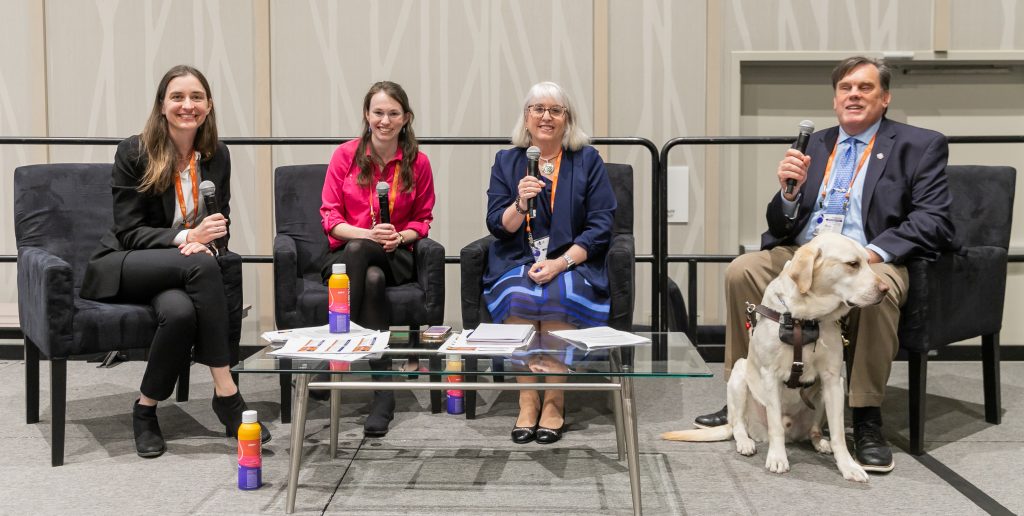Utilizing the Untapped Workforce
5/10/2024

It is a tough market for public transportation agencies in search of employees, but there is an avenue that could be used to boost employment, and the profile of an agency at the same time. Attendees had the chance to learn about hiring disadvantaged populations at the Breaking Through: Opportunities for Untapped and Underutilized Populations in the Transit Workforce session at APTA’s 2024 Mobility Conference.
Moderator Jana Demas, rail deputy director for King County Metro, Seattle, WA, told attendees “Thinking about how are we going to hire all of these people, train them, and keep them is an essential part of the role I play for my organization.”
Hiring disadvantaged populations has its challenges but can be rewarding. Ron Brooks has overcome many challenges to become senior director of policy & stakeholder engagement at UZURV. He emphasizes the importance of having people with limited mobility or sight to help plan services, since so many of those types of people will ultimately use it. “We are better when we have lived experience with the services that we create,” he said.
People returning from incarceration can also be a great source for agencies looking to hire in a tough market. Shayna Gleason, research associate with the Transit Workforce Center, suggests reexamining the wording used regarding background checks on job descriptions. “People are screening themselves out based on assumptions that aren’t true,” she said. Many agencies have found success employing people returning to society in areas such as cleaning buses, trains, and stations. Success was also found in Mississippi with unhoused people. There, the state transportation agency used a CARES Act program to hire 28 people. The program was so successful that federal, state, and private dollars were raised to keep it going.
Speakers emphasized the importance of keeping valued employees healthy and happy. Dr. Judy Shanley, Easterseals director, National Center for Mobility Management, and assistant vice president education & youth transition, Easterseals, suggested three keys to maintaining a positive workplace for people with disabilities: community, culture, and core.
Brooks agreed. “Getting somebody hired is hard, but the culture is the part that will keep people in the industry and keep them at their agencies.” It goes beyond simply providing ADA-approved restrooms or designing workspaces with disabilities in mind. The “core” for an agency should be about care. What happens outside of work? Are corporate and social events accessible? And are disabled employees strongly encouraged to attend?
See more images from the conference.